Banning books seems to be a hot topic these days. I wish the focus would shift from faux banning to actual book banning. In the spring of 2021 I received an email announcing the top ten banned books of 2020. I was intrigued and decided to see what was on the list. This list is taken from documented efforts to remove books from schools and public libraries. The list had the usual assortment of books; Harry Potter, To Kill a Mockingbird, sexually explicit books, racially charged books, gender exploratory books, etc. The surprising thing though was that, overall, there were only 156 cases in 2020 of people trying to have a specific book (275 titles total) removed from a library or school. In a country of 330 million people this is a negligible number. And considering that there are literally tens of thousands of copies of these books available (including at The Boerne Bookshop) to anyone who cares to read them I just don’t see any serious efforts to ban books going on here.
Governmental restrictions on books in America have faded away with most of the hard work in fighting these laws occurring in the 1950s and 60s. Today, there are few publication or distribution restrictions at the state or federal level. The only exceptions are related to child pornography and national security. At the local level there is, and always will be, conversations (occasionally heated) on what to put on the shelves of the public libraries and in the schools but I know of no local restrictions on the production or private distribution of books. All in all, governmental control of what we can and cannot read in America is virtually nonexistent. That cannot be said for nearly every other country but that is a topic for another day.
The actual issue here is: who makes the decisions on what books are carried in our public libraries and schools? They cannot carry everything so there is always someone (usually the librarian) who makes those decisions. I support the librarians that work to keep a wide selection of titles that both represent their community and expose them to new ideas and perspectives. I know how hard it is to make those decisions every day. But it must be remembered that all libraries and schools encompass a wide community and that community should have input into what is (and is not) on the shelves that play a significant part in guiding the culture of the community. What is appropriate to carry in the public library may be very different from what should be carried in the local elementary school or even the high school. Conversations on what is carried are important and generally don’t happen until someone complains about a book. In addition, nearly all librarians today see the importance of their role as a broadening influence and fight hard against efforts to remove specific books from their shelves. While rare, these conversations are healthy for a community to have and reflect a culture of community engagement. I recommend any school or public library that wants to include its stakeholders in the choosing process to do so. I believe it would be a positive endeavor.
This does not mean that there are not efforts to ban books, those efforts are ongoing and gaining strength. My concern is that the emphasis on schools and public libraries is simply virtue signaling by those who are afraid to tackle real book banning which I will discuss next week.
Always in pursuit of intriguing books,
Dale

